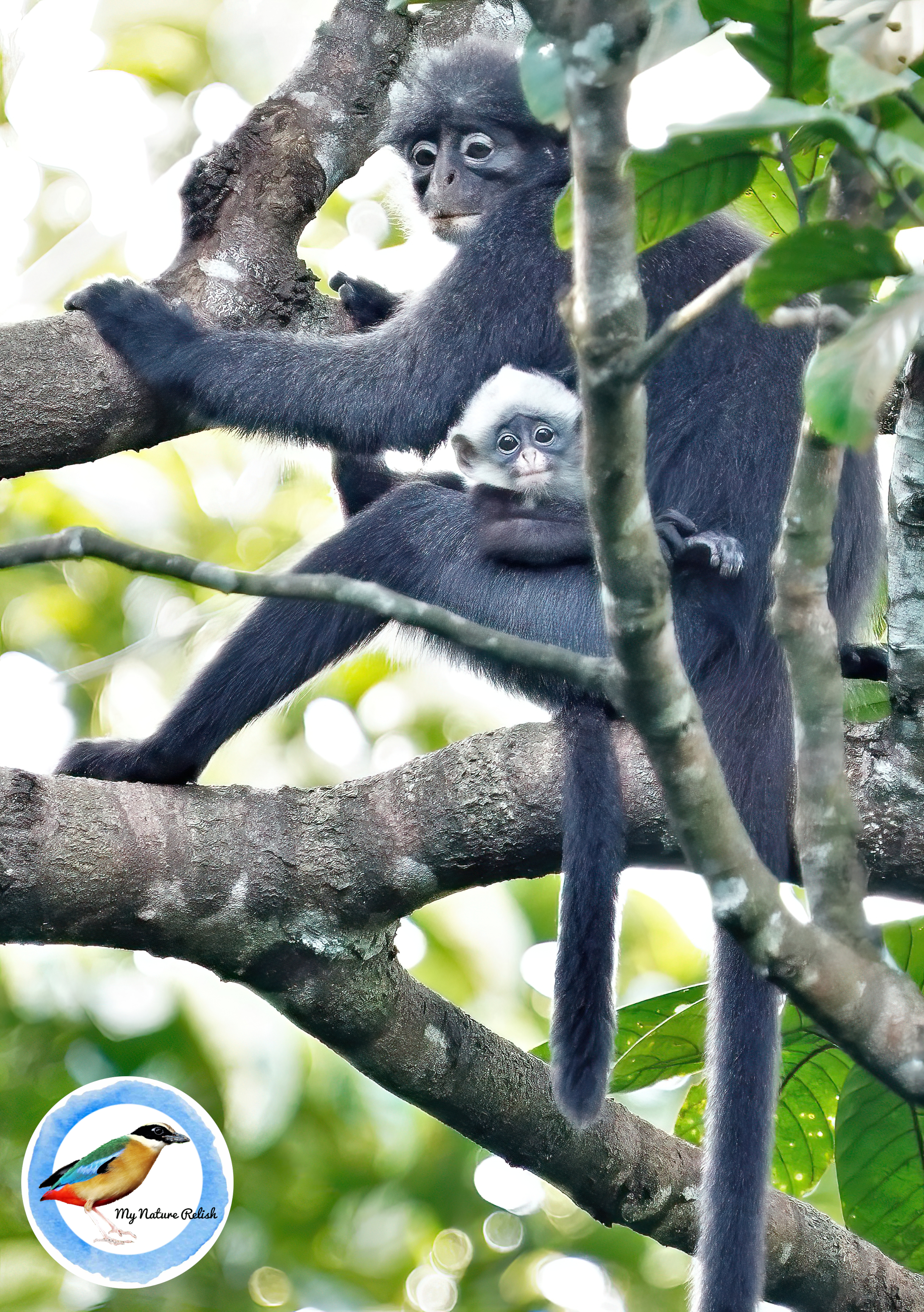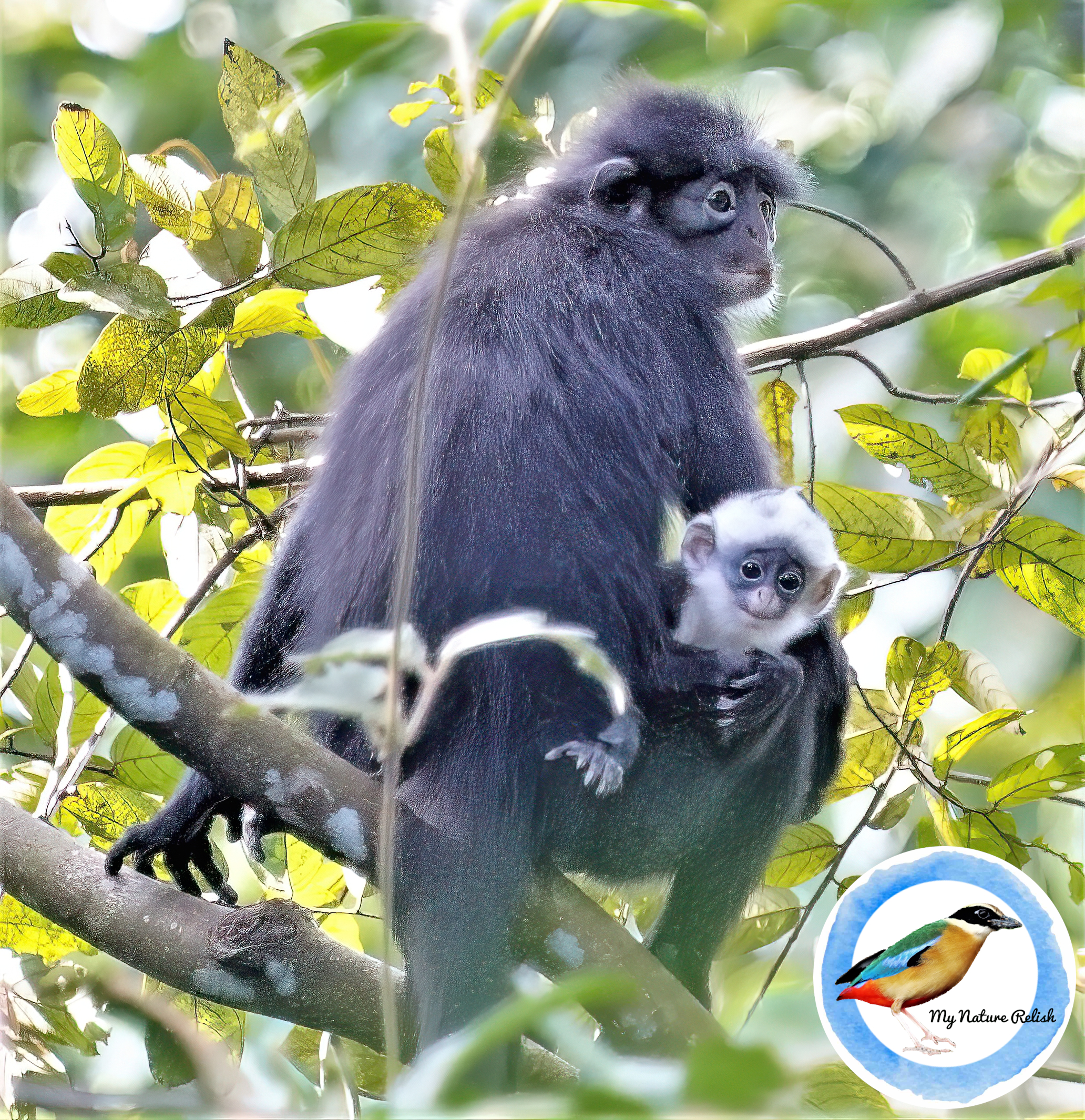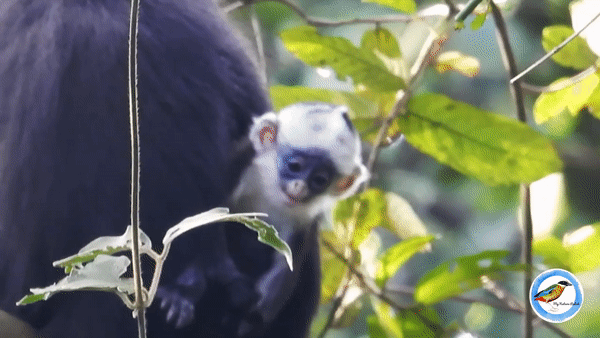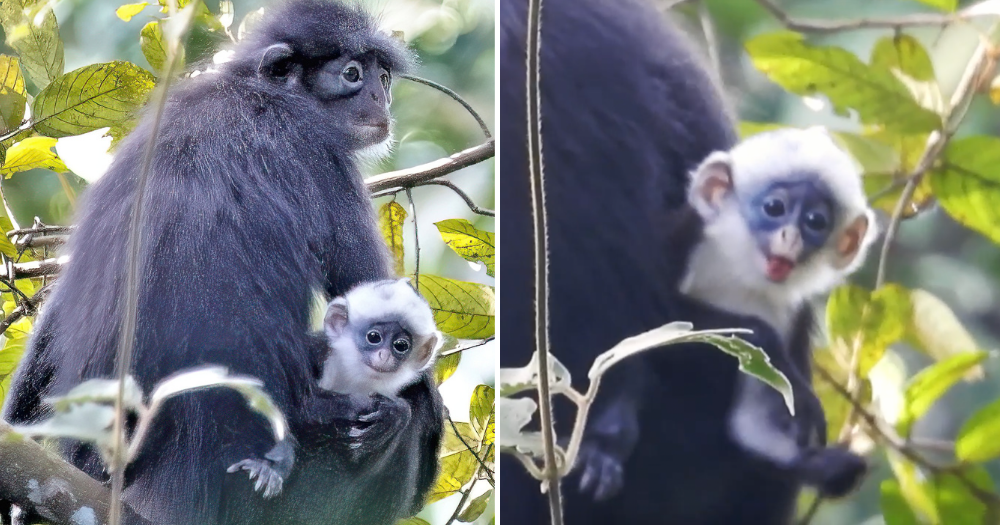Follow us on Telegram for the latest updates: https://t.me/mothershipsg
Several photographers in Singapore were recently treated to a rare and adorable sight — a snowy white Raffles' banded langur baby.
The Raffles' banded langur is a critically endangered species, and a study in 2021 estimated that there are only around 67 individuals left in the wild in Singapore, making the appearance of a baby an even more precious occurrence.
Oh baby!
Low Muncheng, one of the lucky photographers who had this serendipitous encounter, told Mothership that he first came across the baby around two weeks ago.
Low tracks three of the langur families in the Central Catchment Nature Reserve (CCNR).
Langurs are arboreal (tree-dwelling), and families typically play and move about high in the forest canopy. To catch sight of these rare animals, Low and other photographers will look out for dark shadows moving through the branches and foliage.
He shared that mother langurs will usually be sitting, hidden among the leaves, watching the family with her baby safely tucked in her arms.
 Photo courtesy of Low Muncheng
Photo courtesy of Low Muncheng
Naturally white
The baby is currently around four to five weeks old.
In case you're wondering, it is not an albino.
Raffles' banded langur babies are born white, with a black stripe running down their back to their tail, and across their arms.
They start getting the predominantly black colouration of adults when they are around 10 months to one year old.
 Photo courtesy of Low Muncheng
Photo courtesy of Low Muncheng
Low managed to spot the baby a second time, and even captured some of the baby's adorable antics on video.
Here it is winking and sticking out its tongue at the camera.
 Video courtesy of Low Muncheng
Video courtesy of Low Muncheng
The following is another clip Low shared.
"You can see how boisterous the baby is and how the mama is kept busy looking after a baby who at this age does not know she is [seated] 10-storey high," he said.
More about Raffles' banded langur
The Raffles' banded langur is native to Singapore.
What's more, this species of langur is endemic to Singapore and Malaysia, specifically Johor and Pahang. This means they are only found in these places and not anywhere else in the world.
Rapid urban development and subsequent habitat loss is the main cause of their dwindling population.
Locally, the langur population dropped to as low as 15 at one point, but the number has been on the rise due to careful conservation efforts to improve habitat quality and connectivity.
Some examples of these efforts include installing canopy rope bridges between green areas to reduce the incidence of langurs being involved in traffic accidents and becoming roadkill.
Thomson Nature Park was also carved out to act as a buffer to the CCNR, and serves as a crucial habitat for local biodiversity like the langurs.
What to do when you see Raffles' banded langurs
According to the Raffles’ Banded Langur Working Group, their advisory to the members of public when they spot the primates are the following:
- Keep a distance of 5m.
- Do not make loud noises.
- Do not feed them.
- Do not reveal their location. Instead share with the Working Group privately.
Related stories
Top photo courtesy of Low Muncheng
If you like what you read, follow us on Facebook, Instagram, Twitter and Telegram to get the latest updates.
